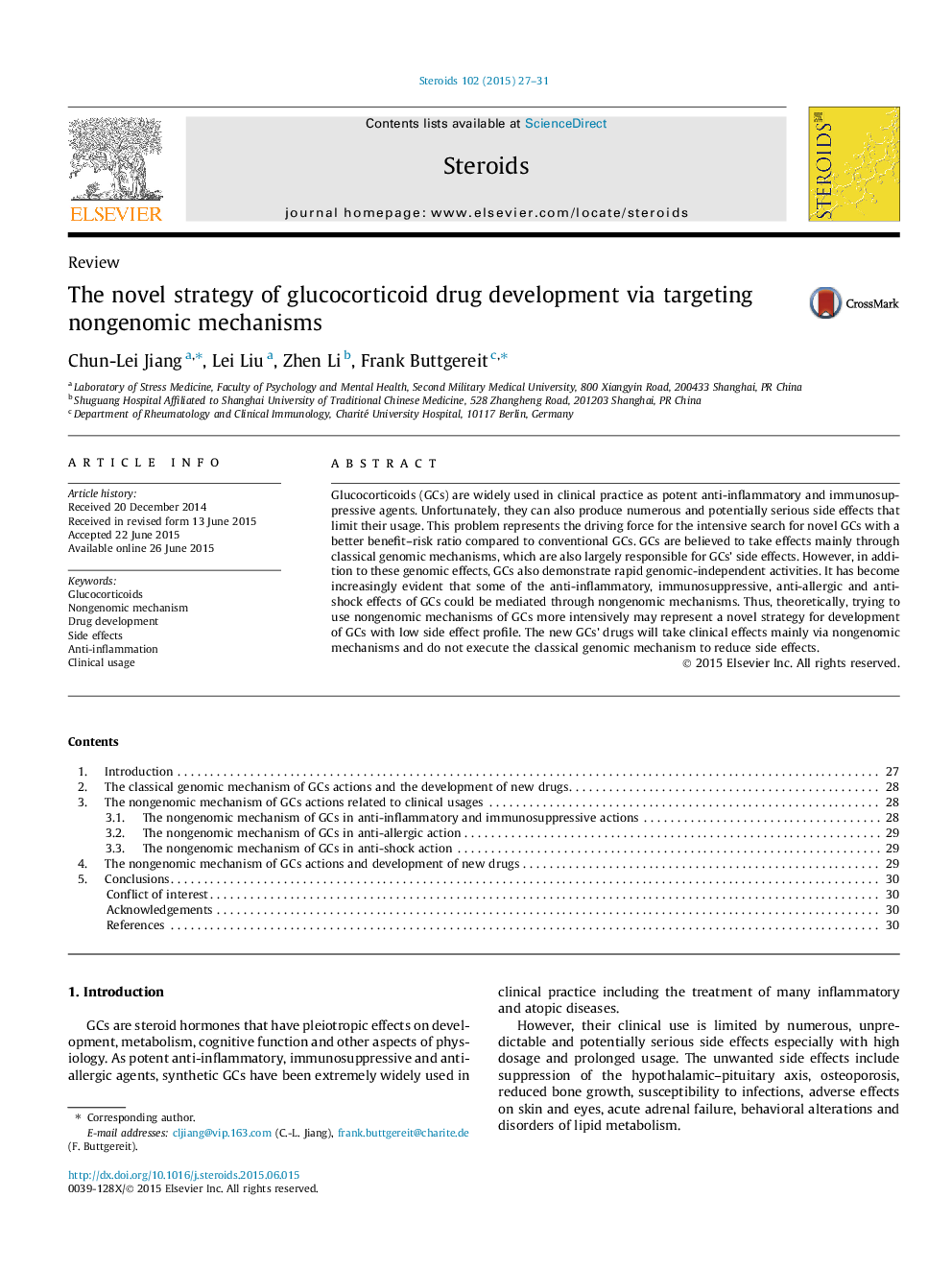| Article ID | Journal | Published Year | Pages | File Type |
|---|---|---|---|---|
| 2027537 | Steroids | 2015 | 5 Pages |
•We review the nongenomic mechanisms of GCs’ actions related to clinical usages.•We propose the novel strategy for development of GCs with low side effects.•The new GC drugs take clinical effects mainly via nongenomic mechanisms.•The new GCs take clinical effects not via genomic mechanism to reduce side effects.
Glucocorticoids (GCs) are widely used in clinical practice as potent anti-inflammatory and immunosuppressive agents. Unfortunately, they can also produce numerous and potentially serious side effects that limit their usage. This problem represents the driving force for the intensive search for novel GCs with a better benefit–risk ratio compared to conventional GCs. GCs are believed to take effects mainly through classical genomic mechanisms, which are also largely responsible for GCs’ side effects. However, in addition to these genomic effects, GCs also demonstrate rapid genomic-independent activities. It has become increasingly evident that some of the anti-inflammatory, immunosuppressive, anti-allergic and anti-shock effects of GCs could be mediated through nongenomic mechanisms. Thus, theoretically, trying to use nongenomic mechanisms of GCs more intensively may represent a novel strategy for development of GCs with low side effect profile. The new GCs’ drugs will take clinical effects mainly via nongenomic mechanisms and do not execute the classical genomic mechanism to reduce side effects.
